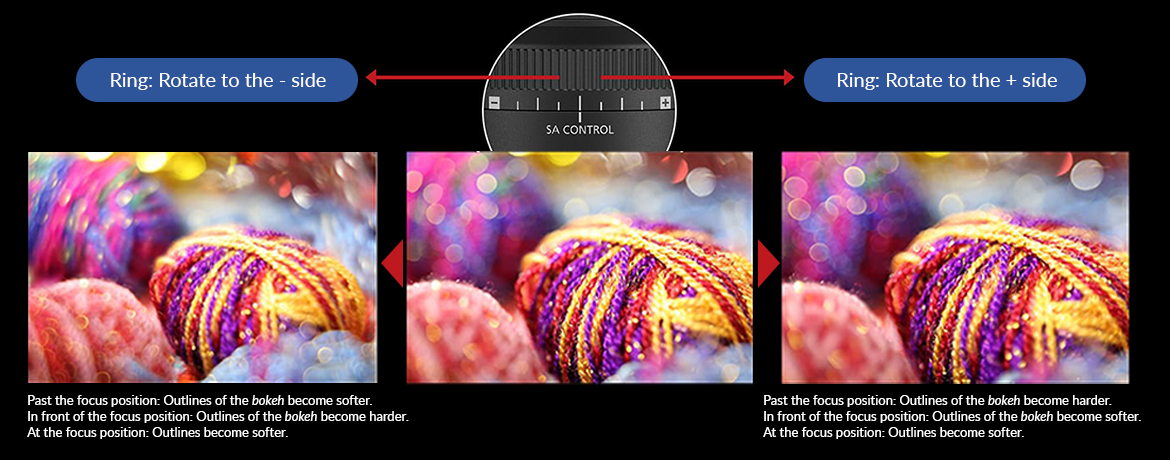SA Control Ring

Since macro photography involves taking photos at a very close distance to the subject, background blur (bokeh) is achieved by adjusting the aperture, rather than adjusting the distance to the subject. Canon wanted to offer users greater creative freedom in achieving unique bokeh effects when taking macro photos. Canon recognized that the same principle could be applied to adjusting the spherical aberration (SA) as well, and this insight led to the development of the SA control ring. At the time, spherical aberration was generally viewed as a specialty lens feature that only served to decrease overall image quality. Canon overcame this stereotype by creating the means to control spherical aberration with high precision using a dedicated control, allowing users to achieve a softer bokeh, or a harder bokeh effects.
When Canon set out to design a RF Mount successor to the EF100mm f/2.8L Macro IS USM lens — a favorite of many macro users — the optical design of the RF100mm f/2.8L MACRO IS USM allowed it to be the first Canon lens to adopt the SA control ring. This macro lens design, which offers a maximum magnification ratio of 1.4x, (exceeding the 1.0x magnificaiton performance of the EF model), and also happens to be highly compatible with the SA control ring due to its floating lens system. This adds new functionality to adjust the character of the bokeh effect, to obtain soft focus, or bubble bokeh (hard bokeh) effects similar to that of older lenses, whether shooting at macro distances or at a normal distance. By rotating the SA control ring on the lens barrel, users can also adjust the softness of the subject in the in-focus area. This is useful when taking macro photos of subjects such as flowers, as well as portrait photos. The SA control and it's ability to adjust the bokeh effect provides new creative expression to macro and portrait users unlike any Canon lens before.

